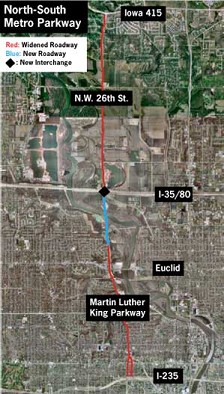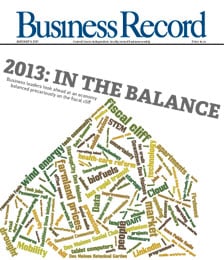North-South Metro Parkway project moves forward

.floatimg-left-hort { float:left; } .floatimg-left-caption-hort { float:left; margin-bottom:10px; width:300px; margin-right:10px; clear:left;} .floatimg-left-vert { float:left; margin-top:10px; margin-right:15px; width:200px;} .floatimg-left-caption-vert { float:left; margin-right:10px; margin-bottom:10px; font-size: 12px; width:200px;} .floatimg-right-hort { float:right; margin-top:10px; margin-left:10px; margin-bottom:10px; width: 300px;} .floatimg-right-caption-hort { float:left; margin-right:10px; margin-bottom:10px; width: 300px; font-size: 12px; } .floatimg-right-vert { float:right; margin-top:10px; margin-left:10px; margin-bottom:10px; width: 200px;} .floatimg-right-caption-vert { float:left; margin-right:10px; margin-bottom:10px; width: 200px; font-size: 12px; } .floatimgright-sidebar { float:right; margin-top:10px; margin-left:10px; margin-bottom:10px; width: 200px; border-top-style: double; border-top-color: black; border-bottom-style: double; border-bottom-color: black;} .floatimgright-sidebar p { line-height: 115%; text-indent: 10px; } .floatimgright-sidebar h4 { font-variant:small-caps; } .pullquote { float:right; margin-top:10px; margin-left:10px; margin-bottom:10px; width: 150px; background: url(http://www.dmbusinessdaily.com/DAILY/editorial/extras/closequote.gif) no-repeat bottom right !important ; line-height: 150%; font-size: 125%; border-top: 1px solid; border-bottom: 1px solid;} .floatvidleft { float:left; margin-bottom:10px; width:325px; margin-right:10px; clear:left;} .floatvidright { float:right; margin-bottom:10px; width:325px; margin-right:10px; clear:left;}
Polk County’s plan for a continuous north-south roadway through Des Moines gained a key ally when the Des Moines City Council voted to join the push for the long fought for and controversial project.
The plan for the project, formally called the N.W. 26th St./Martin Luther King Jr. Extension Project, has been expanded and renamed the North-South Metro Parkway project, and is also supported by the Des Moines Metropolitan Planning Organization (MPO).
If Polk County gets the route it desires, the North-South Metro Parkway would link Des Moines’ northern suburbs to its core with a roadway similar to the portion of Martin Luther King Parkway and Fleur Drive south of I-235. The new roadway would start at Iowa 415 in Ankeny and follow the path of the existing N.W. 26th St. south to a new interchange on Interstate 35/80. The road would continue with a bridge over the Des Moines River and an environmental area before linking up with the existing Martin Luther King Jr. Parkway at Euclid Ave.
The old project would have ended at this point, but the Federal Highway Administration (FHWA) asked Polk County to expand the project by widening the road on down Martin Luther King Jr. Parkway all the way to Interstate 235. Prior to the expansion, Polk County would have needed only minor cooperation from Des Moines, but the expanded portion of the project lays solely in the city, and the two governmental bodies have decided to move forward with the project jointly.
The project, however, is facing opposition for a variety of reasons from the Rock Island District of the U.S. Corps of Engineers, the Iowa Department of Natural Resources (DNR), a local group named the Neighborhood Natural Recreation Preservation Project – which fought against this same project more than a decade ago – and a variety of other neighborhood associations and recreational organizations.
Currently the project is being led through the NEPA (National Environmental Policy Act) process by its hired consultant Snyder & Associates, which was brought back on board in May 2006. As part of the NEPA process, Snyder and Associates will conduct an Environmental Impact Statement, which consists of a series of studies that cover social issues and both the built and natural environment.
Why Polk County wants it:
According to Tom Kane, executive director of the MPO, the FHWA wanted a road from Euclid to I-35/80 years ago, and this project itself has been in discussion for more than 20 years. Now it is one of the top priorities, if not No. 1, of the MPO, the executive committee said at an Aug. 12 MPO executive meeting.
Both Larry Land, Polk County’s director of public works, and Kane point to a lack of continuous routes that run north and south through the city as the main reason the route is needed. Land said I-235 was a limited build to avoid taking too many homes in the construction process; the roadway could have been built wider to handle more traffic. Because of I-235’s shortcomings, north-south routes were desired to aid in the carrying of traffic.
“You’ll get a north-south route through the city of Des Moines that is not there today, and we feel that is one of the limiting factors in the city,” Land said.
Land points to a variety of benefits the roadway would provide. He said it would help reduce travel distance for people living on the north side of Des Moines in Ankeny and Polk City, for example, and give those people better access to downtown, while giving them an alternate route to use instead of the interstates. Land pointed to Second Avenue, Sixth Avenue, Beaver Drive and Merle Hay Road as routes that are all highly used right now but aren’t what he would call “complete north-south routes” because they go downtown and stop. This new road would help alleviate the increasing traffic levels on those roads.
The interchange would be built in the middle of a four-mile stretch of I-35/80 between the Merle Hay Road and Second Avenue exits, which currently doesn’t have an interchange. Not only would this give people living in that area better access to the interstate, which could relieve some local traffic and interstate traffic, but it also addresses a safety concern.
When I-35/80 was widened, a retaining wall was put in the middle of the interstate, which prevents emergency vehicles and incident management teams from easily reaching the other side along the four-mile stretch. A new interchange would reduce the distance a vehicle would have to go to get to the other side. Land says Polk County prefers the route that comes down from 26th Street, but the decision will depend heavily on the findings during the NEPA process.
The NEPA process
Polk County brought Ankeny-based Snyder & Associates on to be the consultant for the project and to lead it through the NEPA process back in 1998. The project was shelved due to a lack of support, but Snyder & Associates was brought back on in May 2006 to do the study.
Jerry Searle of Snyder & Associates said the point of the NEPA process is to make sure the impact of the project is assessed to see if all the positive factors outweigh the negatives.
“It ultimately ends with a record of decision; it is all the other decisions that are made, do we have sufficient information, have we adequately documented the impact of this action with respect to a certain subject or resource,” Searle said.
The process itself evolves because it is based on comment and input from the public and groups that want different aspects studied. Because the project has been expanded to go south to I-235, the amount and scope of the work involved in the NEPA process has doubled.
As part of the NEPA process, a purpose and need statement is developed that helps focus the project. In this case, three aspects have been identified as the purpose and need: A continuous north-south corridor, interstate access and safety on the roads.
Another aspect of NEPA is a requirement to look at alternate routes to the proposed route. According to Jamie Tunnell Bents of Snyder & Associates, there are now 15 or 16 alternate routes identified, but only three – including the favored route – match the purpose and need. All three routes must cross the Des Moines River at some point, and the two alternatives from the desired route might actually be worse for the environment, according to Bents.
U.S. Army Corps of Engineers
The Rock Island District of the U.S. Army Corps of Engineers does not support any actions that will affect the federal lands that are located in the greenbelt and wetland area surrounding the Des Moines River just south of I-80/35. It also sent a letter to Sen. Charles Grassley on Sept. 11 to express its concern.
According to Ron Fournier, the Corps’ chief of corporate communications, the Corps purchased those lands for the Saylorville reservoir operations, and does not believe the road, which would bisect the land, is conducive to the operations of that reservoir. He said Polk County would need to get a permit from the Corps in order to build – and that, he said, won’t be happening.
“If they are looking to build on our land, you can guarantee you are not going to get a permit from us,” Fournier said.
Fournier said the county and city could appeal up the ladder all the way to Washington to try to get the permit approved, but said the odds are against them building on the Corps’ land.
Searle, although he appreciates the Corps being straightforward about its intent, would rather not jump to conclusions yet about that land. He feels that by the time the study is done, the local governments will try to negotiate a way past the roadblock through mitigation. He suggested a tradeoff, where Polk County would be taking a certain amount of acres from the Corps reservoir, and Polk County would create a new environmental area for the Corps. The scope of such a tradeoff could be dependent on the quality and the quantity of the land taken.
Regardless, Searle said, it will be interesting to see how the situation is handled, and, said, “I’m not certain we know how it will be handled at this point.”
Land also thought an agreement of some sort would smooth over the issue, but said, “Exactly how we get there, I’m not sure of because we don’t go through this all that often, and I’ve been around a long time.”
A separate issue the Corps is standing on as a defense against the project is Section 4(f) of the U.S. Department of Transportation Act of 1966. That section has the goal of protecting the countryside, publicly owned park and recreation land, publicly owned wildlife and waterfowl refuges, and historic sites.
The Corps mandate is to protect land based on Section 4(f). If the FHWA rules the federal land in the reservoir is covered by Section 4(f), it will make it harder for the project to be completed. Searle believes it is a foregone conclusion that it will be classified as section 4(f) land.
In order to build on 4(f) land – separate from the issue of the permit the Corps requires – Polk County would have to prove, per federal law, that based on the NEPA process there is no feasible and prudent alternative to building through the land.
Controversial aspects
The Neighborhood Natural Recreation Preservation Project (NNRPP), which is a nonprofit group of local citizens consisting of 20 core members, re-formed and began meeting once a month in an effort to fight the North-South Metro Parkway.
“All roadways have their negative aspects that need to be balanced with what purpose the road is going to serve,” said Mike Baldus, NNRPP president, who is also an environmentalist. “But this one has so many things that stack up against it, that you almost couldn’t pick a worse spot.”
Baldus has many concerns about the effect the project will have on the environment, social justice issues and economic issues for Des Moines. He lives in the vicinity of the proposed roadway, but his home would not be directly affected by it.
Land said the study is being done to weigh the positives and negatives, and could even lead them to say it is a no-build situation. He and Searle also stressed it is very early in the study process because of the expansion of the project and that many of the questions won’t be able to be answered until the study is completed.
“The human nature is essentially that people want to have the final answer, and there is no final answer at this point in time,” Searle said.
Baldus, however, said he has concerns about how thorough the study will be.
“It is a David vs. Goliath thing,” he said. “We are talking (about) public entities like Polk County that are dealing with millions of dollars of taxpayer money to throw around at this thing.”
Here are some of the concerns.
Environmental: Baldus is concerned, as is the Department of Natural Resources, which went on record in 2008 against the project, about the impact the building process and subsequent roadway will have on what they consider an environmentally sensitive area full of animals and bird species. They are concerned also about the potential loss of four trails and the serenity of being away from roadways.
Baldus said that Iowa is the most altered state in the nation, and has less than two percent of its original landscape remaining.
“We have so little left now that we Iowans in particular should be very, very careful and strongly consider every time we are going to take a little more away,” Baldus said.
Land said he recognizes the concern over the environmental loss, and that is one reason they are looking at creating an Urban Reserve that would utilize sand and gravel mines in the area. Land said Polk County sent letters to the sand and gravel companies that have land in the area in the hope of acquiring the land when the companies are finished with it. The total acquired land, which would be turned into the Urban Reserve, would bump the natural area from approximately 2,300 acres to 6,000. Land said the county is hoping to get this worked in as part of the North-South Metro Parkway project.
Home takings and traffic: Baldus raised concerns about the number of houses that would be taken along Martin Luther King Jr. Parkway. He said he believes that the city will attempt to save money by leaving as many houses up as possible and simply encroaching.
Land said although it would be nice to tell the community that no homes will be taken, he doubts that will happen. He did say the project backers are going into the project with a mindset and goal to not displace families. Snyder & Associates said that they still haven’t quantified how many home takings there would be.
Baldus also worried about the potential for an increase in traffic along the route. Land said that they anticipate much of the traffic using the new roadway would be the same traffic that is already traveling through adjacent neighborhoods and winds up using MLK Parkway anyway. He said early studies show that traffic will rise, but not by a substantial amount
Economic Issues: Baldus feels that this roadway, even though it will enable economic growth and benefit the northern suburbs, will end up hurting Des Moines. He wonders what the benefit is for Des Moines, and is concerned about what he called a flight of wealth out of the core city into its suburbs.
“It is not really economic development, it is taking from one place and giving to somewhere else; that is not my definition of economic development,” Baldus said.
Land, however, feels Des Moines will see the same benefits of economic growth because it will allow for people in the northern and southern suburbs to have easier access to downtown. He likened potential economic development that could be seen along the new route to the spur in development that was seen after the lower portion of MLK Parkway and Fleur Drive was put in. Snyder & Associates said that as part of the study, an economist would likely be brought in to look at the economic impact.
Where it goes from here
The total cost for the project is still unknown. It likely will have a large price tag, Land said, considering a new bridge and interchange will be needed, and street widening would be done. But because no route is finalized, neither is a cost.
Once Snyder & Associates completes the NEPA process, it will undertake a year of reviews, with 2011 set as a loose target date for sending a plan to the FHWA for approval. Land also said the county plans to have a meeting with the DNR and the Corps, along with a meeting with the communities north of Des Moines.
Baldus said the NNRPP will continue advocating against the project, and has made it a goal to educate the public about the project it feels many will oppose. A Web site, www.nnrpp.org, has been set up with information about the project and letters from groups in opposition to the project.
Baldus also said he plans to contact the Natural Resources Defense Council, a group of lawyers that fight court cases around the country involving environmental issues, to see if this is something they would help fight. As part of the NEPA process, Baldus said, there will be an opportunity through legal avenues to challenge the claims in many areas of the study.
“(The study) is chock-full of shades of gray, so there is inevitably going to be opportunity to challenge their claims in many areas as well as to take information that they have had no choice but to present in the statement,” Baldus said. “And some of that very information will be damning to the project.”
As part of the NEPA process, Land said the county is mandated to have public hearings about the project. Some have been held, but no date has been set for the next one.
Land said the study has been blocked in the past but said getting the study completed will go a long way toward deciding whether the city and county want to build the project.
“I think right now, we just get the sense that there is just a lot more backing and people want the thing built a lot more so than they ever did before,” Land said. “I think people have a tendency to say, well, maybe we better at least take a look at this project.”






